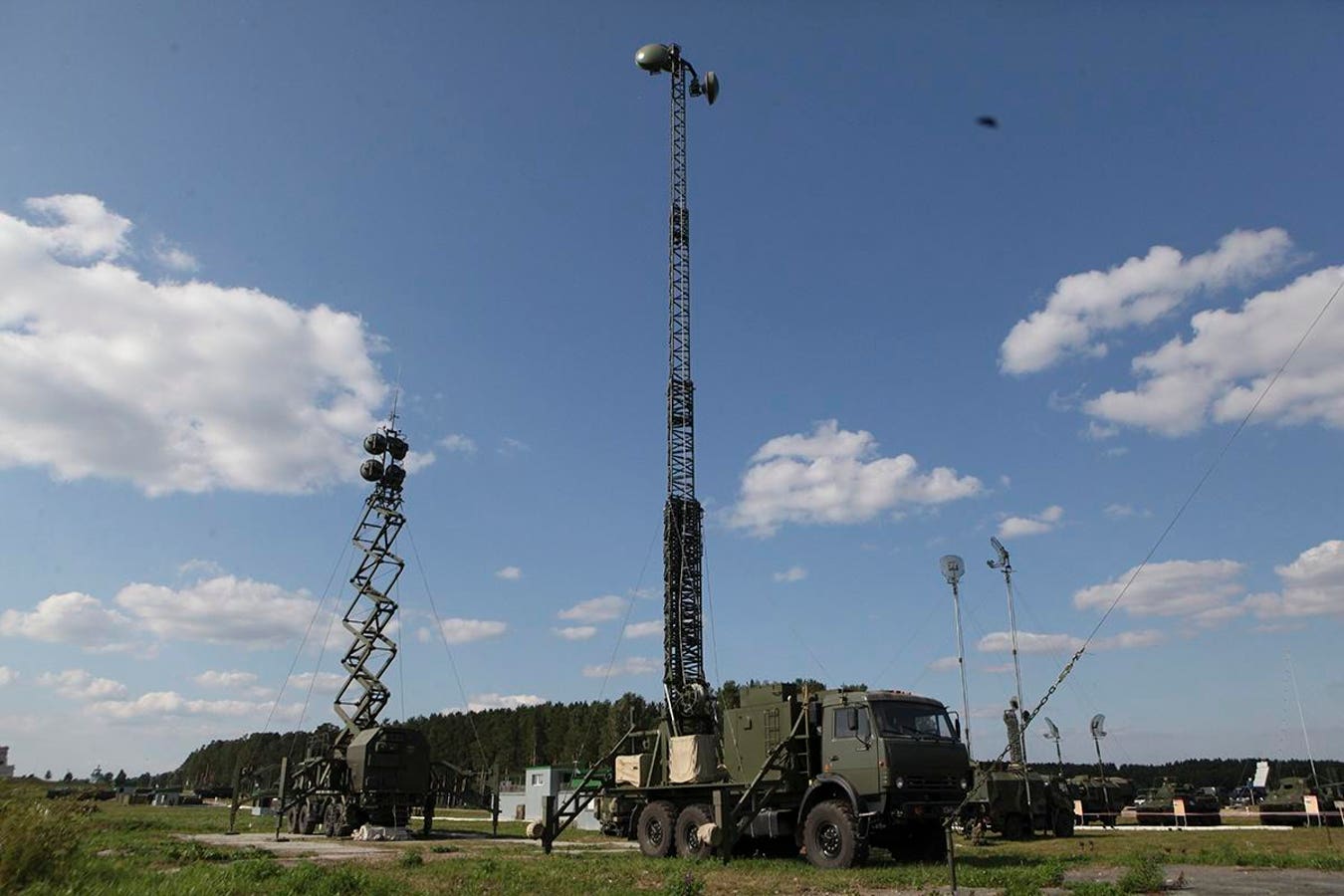Unlike many Western armies, the Russian army can’t always count on having access to satellites for long-range communication. So the Russians mostly rely on an alternative to satellite radio: ground-based radios that bounce signals off the troposphere, the vapor-filled layer of the atmosphere with an average altitude of around nine miles.
The Russian’s network of tropospheric radios depends on special relay vehicles that, positioned scores or hundreds of miles apart between the front line and various military headquarters, receive and re-transmit the weak signals radiating from the troposphere.
These radio-relay vehicles are a pricey and precious resource, even when they’re simply relaying normal line-of-sight signals. Which is why, on or just before Thursday, the Ukrainian special operations command hunted down, and destroyed with an explosive drone, one of the Russian army’s newest R-416GM relay vehicles—and then celebrated the destruction on social media.
“For the first time in the history of this war, [an] R-416GM, a modern Russian mobile communication station, was destroyed by [Ukrainian special] operators,” the ministry crowed.
Plinking a single R-416GM, out of many dozens of similar vehicles the Russians have staged all along the 700-mile front line of the wider war, won’t significantly disrupt Russian communications. But if the Ukrainians can find and destroy more of the radio-relay vehicles—older R-142s and new R-419L1s in addition to the R-416GMs—they may begin to deafen and befuddle some combat units by cutting them off from their top commanders.
Russian radio-relay vehicles are impressive systems. The R-142, the Russians’ main relay vehicle during the later decades of the Cold War, packed as many as five separate long-range radios in a single 3.5-ton GAZ-66 truck with space for up to five crew.
When Russian industry developed the newer R-419L1 a few years ago, Rosoboronexport—the Russian export agency—described its signals “as equal in quality to digital cable and fiber-optic communication lines.”
The Russian army deployed relay vehicles, including dozens of R-416GMs that were practically factory-fresh, in and around Ukraine as part of the initial concentration of forces in early 2022. They were joined by a large number of R-419L1s.
The R-419L1s were either easier to locate, closer to the front line—or both. Ukrainian forces destroyed three of them in the first 20 months of the wider war. It wasn’t until the war was grinding into its third year that they finally spotted an R-416GM in the vicinity of Kremyanoe in southern Russia 10 miles north of the Russia-Ukraine border.
As a Ukrainian surveillance drone observed from high overhead, a second drone zoomed in and struck the camouflaged vehicle with its distinctive tall radio mast. The vehicle burned and billowed smoke in the aftermath of the strike.
How the Ukrainians found the R-416GM is unclear. A skilled and patient drone crew may have identified it in countless hours of surveillance footage. It’s also possible Ukrainian intelligence troops detected Russian radio broadcasts—and traced them back to the relay vehicle.
With a little discipline, a radio-relay crew could obscure its location. By limiting the duration of its broadcasts, and frequently changing position, the crew of an R-416GM might thwart Ukrainian efforts to trace the vehicle’s coordinates.
But it’s possible Russian signal troops lack that discipline. In a March 2022 study for the Royal United Services Institute in London, analysts Sam Cranny-Evans and Thomas Withington noted “the apparently lax communications discipline sources have said some Russian units have exhibited.”
Maybe the R-416GM crew gave itself away through sheer laziness or incompetence, making it an easy target for an explosive drone.
Sources:
1. Ukrainian defense ministry: https://x.com/DefenceU/status/1801226260255006899
2. U.S. Army: https://odin.tradoc.army.mil/WEG/Asset/R-142_NSA_Russian_4x4_Command_and_Control_Vehicle
3. Rosoboronexport: https://roe.ru/eng/catalog/land-forces/military-communications-equipment-and-automated-control-systems/radio-relay/r-419l1/
4. Oryx: https://www.oryxspioenkop.com/2022/02/attack-on-europe-documenting-equipment.html
5. Royal United Services Institute: https://rusi.org/explore-our-research/publications/commentary/russian-comms-ukraine-world-hertz
Read the full article here





